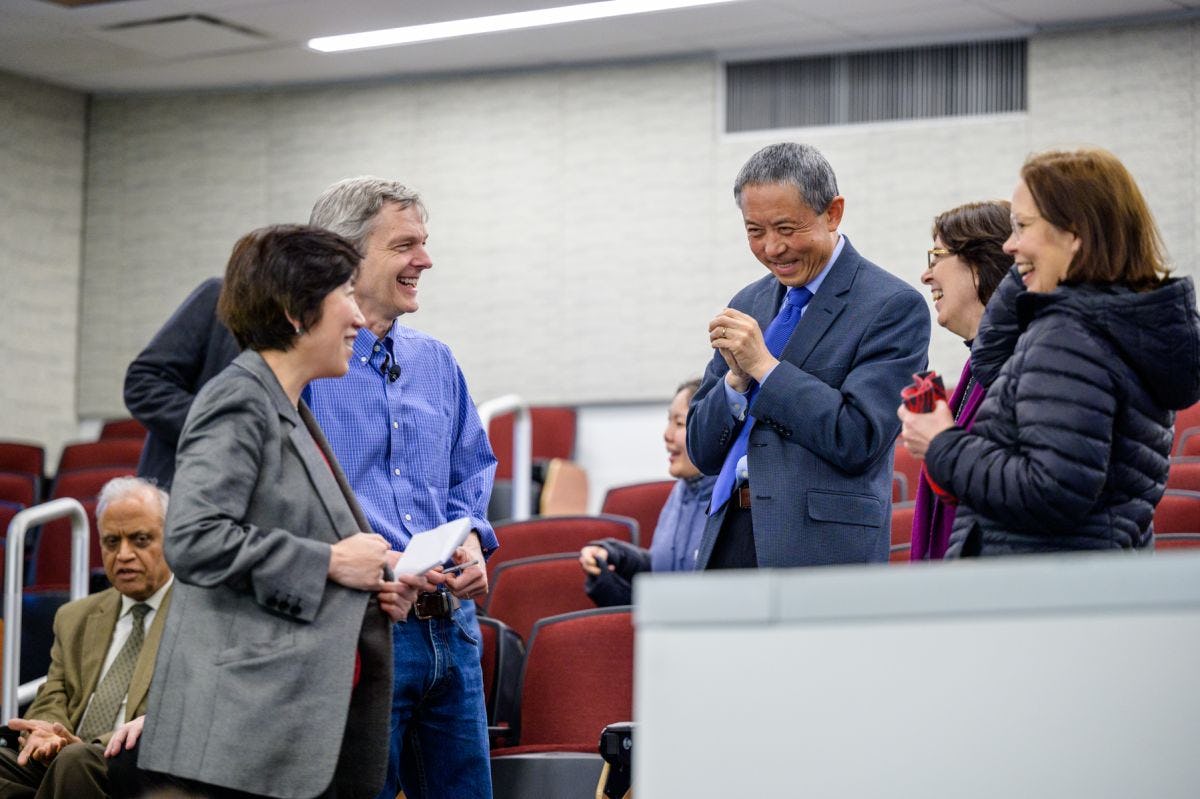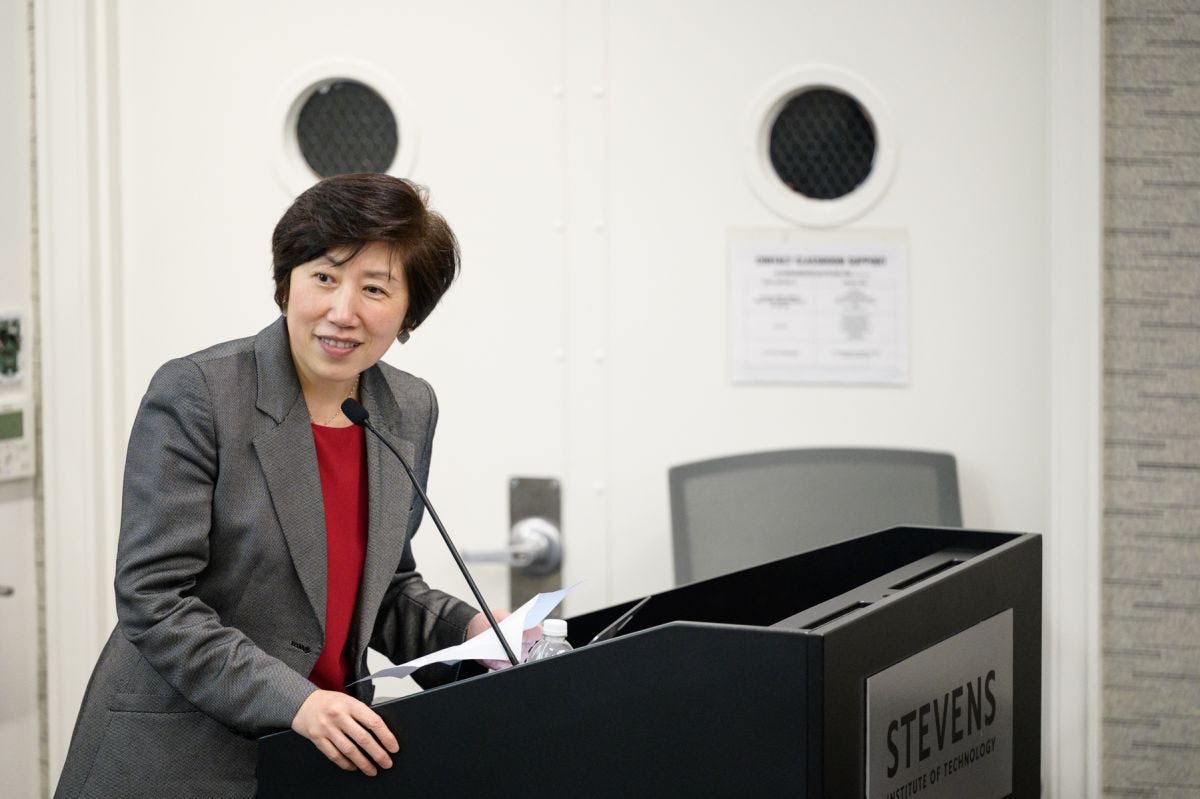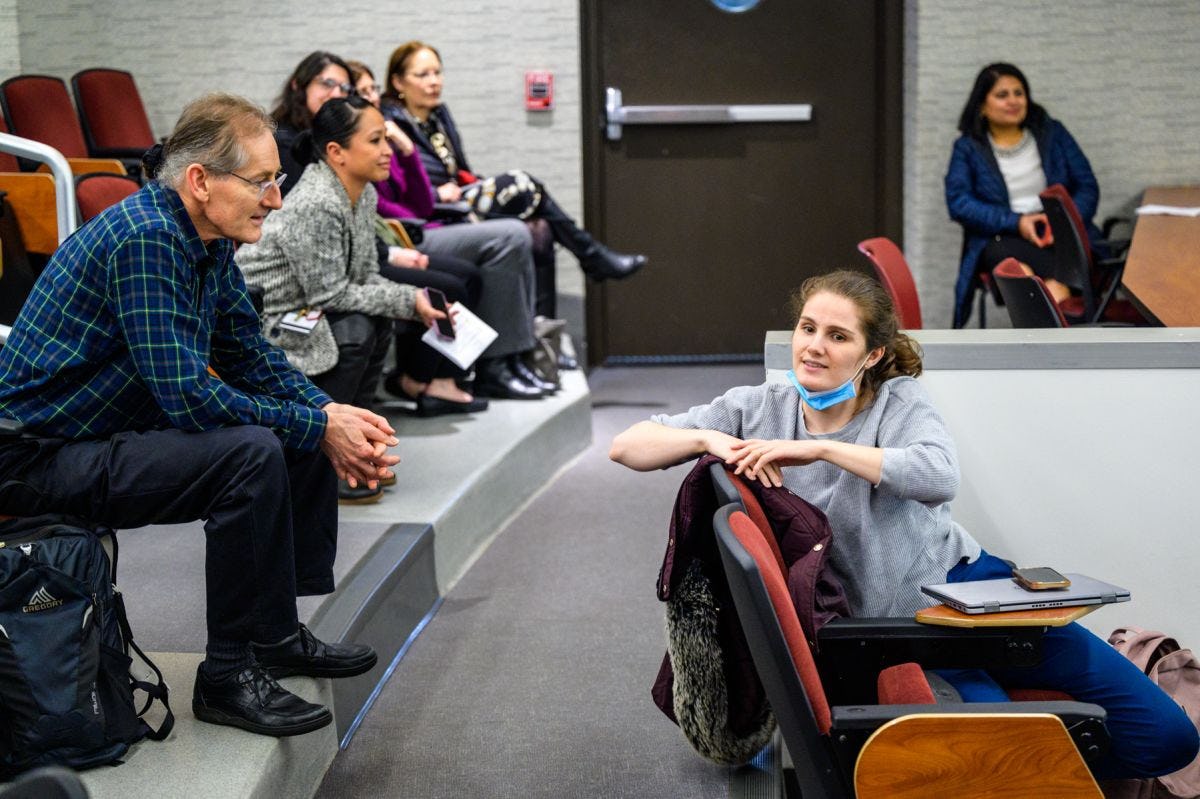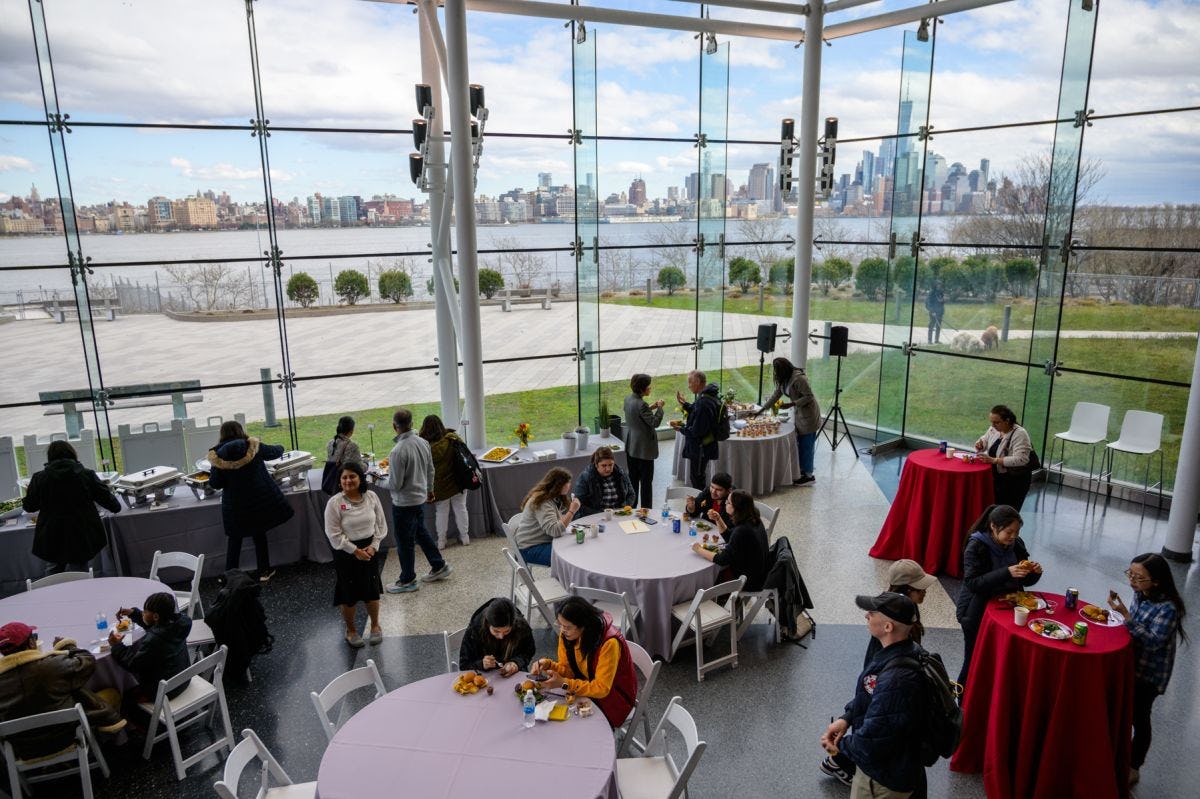Learning with LEGO®: Dean’s Special Lecture Welcomes Robotics Engineer Chris Rogers
The thought leader, a Tufts professor who works with LEGO® Education, believes students can create their own knowledge in tandem with his
You have a $10-million grant. Now you must determine:
What is the best tasting food in the world?
What is the best way to learn?
While spending the money could be a great deal of fun, neither question has just one answer — but Chris Rogers, who posed this scenario to a captive audience on campus at Stevens Institute of Technology on April 4, 2024, is fascinated by the latter question. That’s why, in classrooms across the world, he is applying research from the learning sciences to change how and what we teach in engineering — with the help of robots and LEGO®.
At the 2024 Dean’s Special Lecture, Jean Zu, dean of the Charles V. Schaefer, Jr. School of Engineering and Science, personally welcomed Rogers to share his presentation, titled “LEGO® Engineering from Kindergarten to College: A 30-Year Journey of Student-Driven Learning,” to an audience of faculty, students and community members, the youngest being a curious third-grader. Rogers is a professor of mechanical engineering at Tufts University, and his research areas include the learning sciences, robotics, and collaboration with LEGO® Education and the LEGO® Foundation.
Rogers teaches robotics classes using LEGO® as the primary building tools. This is true of his courses at Tufts University, as well as the outreach he does with younger students in other settings. Playing with LEGO® can be fun at any age, after all. He enjoys giving students tough problems and seeing what they can come up with as solutions. For example, he might give a group of kindergarten students a huge Titanic LEGO® set and tell them they have one hour to complete the project, reasoning that “there are thirty of you, so that’s thirty hours of work; you should be able to do it.”
In another interesting assignment, he asked students to build a robot that moved forward without using wheels. Using the same code and the same pieces, students found many ways to solve this problem.
Rogers shared photos of robots engineered from LEGO® by learners of all ages, from small children at schools lacking resources to students of his own at Tufts, and what he found consistently remarkable was what students were able to create when given the chance to do their own engineering, building from their own knowledge and creating their own solutions, rather than replicating someone else’s.
Slide after slide revealed inventions ranging from robotic animals and puppets, to robotic jousting knights, and robots that play musical instruments or paint.
There was even a waltzing robot that was tasked with finding a partner and dancing around a room to tempo, but Rogers gave the disclaimer, “Did it work? Well, maybe that’s why I’m just showing you pictures, not a video of them dancing.”
In a word, Rogers’ talk was humorous. In another: inspiring.
“I’ve seen kids on the autism spectrum who are learning how to communicate with others because they want their robots to do what they are supposed to be doing,” he related.
He sees teaching as a balancing act: “me telling you my knowledge, and me listening to you to understand your knowledge,” he said.
In his own classroom, he tries to teach the principles of curiosity (asking why); learning for the sake of learning (finding answers); reflection (questioning one’s answers); and transference (moving the answers into new areas).
There are different types of learning, too: There is understanding the thinking of others, versus learning to think for yourself.
Above all, he believes that students of all ages should be taught that their opinions matter — and they should begin to hear this message as early as possible.
“It is inspiring to see how Dr. Rogers works with his students,” said Zu. “At Stevens, we also value student-centricity.”





